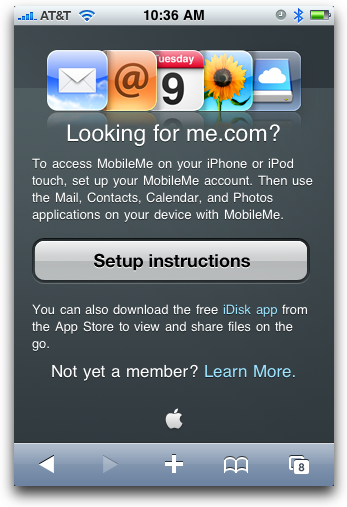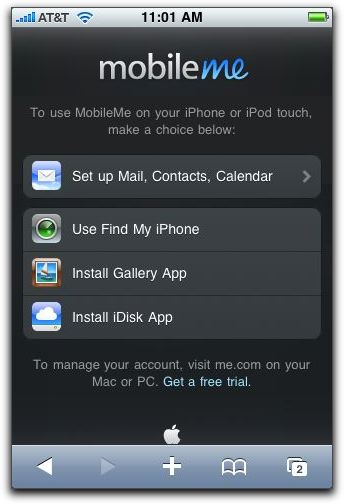Springy Dock Tricks
If you drag a file and hover over Dock icons, various useful things happen which are similar to Finder springing. If it's a window, the window un-minimizes from the Dock. If it's a stack, the corresponding folder in the Finder opens. If it's the Finder, it brings the Finder to the foreground and opens a window if one doesn't exist already. But the coolest (and most hidden) springing trick is if you hover over an application and press the Space bar, the application comes to the foreground. This is great for things like grabbing a file from somewhere to drop into a Mail composition window that's otherwise hidden. Grab the file you want, hover over the Mail icon, press the Space bar, and Mail comes to the front for you to drop the file into the compose window. Be sure that Spring-Loaded Folders and Windows is enabled in the Finder Preferences window.
Visit plucky tree
Submitted by
cricket
Recent TidBITS Talk Discussions
- Alternatives to MobileMe for syncing calendars between iPad/Mac (1 message)
- Free anti-virus for the Mac (20 messages)
- iTunes 10 syncing iPod Touch 4.1 (2 messages)
- Thoughts about Ping (16 messages)
Related Articles
- Apple Adds Find My iPhone App and Updates Web App (18 Jun 10)
- Four Changes We Want to See from Apple in 2010 (22 Feb 10)
- Use Find My iPhone from an iPhone (30 Sep 09)
- Find Your Lost iPhone or iPod touch with iPhone OS 3.0 (17 Jun 09)
Published in TidBITS 1015.
Subscribe to our weekly email edition.
- Microsoft Revises and Renames Its Phone OS
- Verizon Dials in Skype
- TidBITS Staff Caught on Video at Macworld Expo
- Greenpeace Hitching Itself to Apple's Star?
- Four Changes We Want to See from Apple in 2010
- Prepare Your Enterprise for the iPad
- TidBITS Watchlist: Notable Software Updates for 22 February 2010
- ExtraBITS for 22 February 2010
MobileMe Web Site Adds Some Mobile Safari Support
It's ironic that MobileMe couldn't be accessed via Mobile Safari. MobileMe's me.com Web site used to offer up an error page with a link to information on how to set up an iPhone or iPod touch for synchronization. Apple has now changed that welcome screen for its mobile devices, alerting the world via a Knowledge Base note that we found out about via Macworld.
While requiring sync for email, contacts, and calendar might be acceptable - even if I would like to have the option to use MobileMe's Web apps on someone else's iPhone or iPod touch - Find My iPhone/iPod touch couldn't be used via Mobile Safari. If your iPod touch or iPhone were lost or stolen, you couldn't use someone else's iPhone to find yours! (Adam Engst described a workaround in "Use Find My iPhone from an iPhone," 30 September 2009.) I wonder if an Apple executive discovered this lacuna when his or her phone was missing.
The revised Mobile Safari welcome screen for me.com is better organized. The link to setup instructions for synchronization is still there, but there are three additional buttons: Use Find My iPhone, Install Gallery App (to access your MobileMe Gallery), and Install iDisk App (for file access).
Tap the Use Find My iPhone button, and the browser presents the standard full-screen desktop login window for me.com, not one designed for Mobile Safari. It's awkward. (See "Find Your Lost iPhone or iPod touch with iPhone OS 3.0," 17 June 2009, for more details about that feature.)
When logged in, you see the full main interface for a moment, after which you're redirected to the Find My iPhone/iPod touch page. That page also isn't optimized and you have to zoom and expand to read the page's contents or activate functions like wiping your phone remotely or locking the phone with a four-digit PIN.
Apple should still improve this process, but making Find My iPhone/iPod touch viewable via Mobile Safari is at least a step in the right direction.
 SYNC YOUR PHONE with The Missing Sync: Sync your calendar,
SYNC YOUR PHONE with The Missing Sync: Sync your calendar,address book, music, photos and much more between your phone
and Mac. Supports ANDROID, BLACKBERRY, PALM PRE and many
other phones. <http://www.markspace.com/bits>




